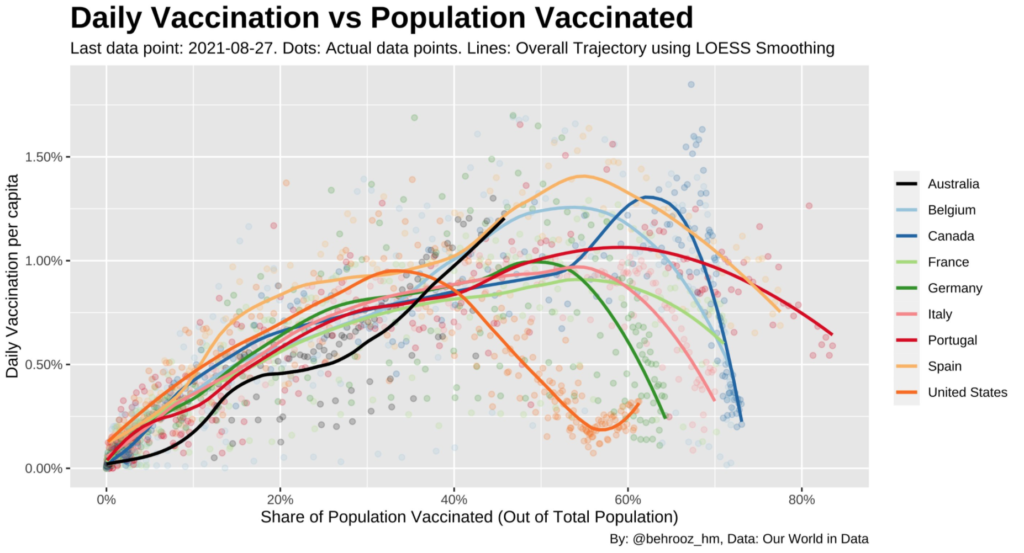Treatments
Good news! This preprint says that baricitinib reduces all-causes mortality of hospitalized COVID-19 patients by 38.2%!
Vaccines
Remember how I was saying that I thought we’d see that longer doses were better? It turns out that waaay longer is better. This preprint says that for AstraZeneca, antibody levels were four times higher in people who had a 44 or 45 week interval than people who had an 8-12 week interval.
The same study also found that antibody levels were twice as high after a third shot than they were after a second shot, but the levels were comparable to after the dose2 with a 45-week-interval (and I couldn’t tell what the dose1 to dose2 interval was for people who got a dose3).
More evidence for waning immunity: this preprint says that vaccine effectiveness was lower in July than it was March through June. Some of that might be Delta vs. Alpha, but people who were vaccinated in March through May got sick in July less often than the people who got vaccinated in January or February did.
This preprint from Israel says that recently-vaccinated people with breakout cases have a much lower viral load. However, the viral loads increase as time-since-vax goes by, and the viral load is identical in vaxxed and unvaxxed people after six months. Here’s a mass media article on the study.
This tweet has a graph with an interesting way of looking at vax rate:

Long COVID
Good news! This preprint says that double-vaxxinated people are about half as likely to get Long COVID after an infection than unvaxxed people.
This preprint says that about 1 in 7 children and young people in a study in England had symptoms 15 weeks due to a COVID-19 infection. Note, however, that this was done via a survey sent to people in England’s electronic health records database, and only 13% responded to the survey. There might be self-selection.
This study found that Long COVID can damage the kidneys.
Mitigation Measures
This study says masks work, and surgical masks work better than cloth masks. A public education campaign in different cities in Bangladesh increased mask wearing from 13.3% to 42.3%, and the COVID-19 seroprevalence was 9.3% lower in cloth-mask-cities and 11.2% in surgical-mask-cities. Here’s a mass-media article on the study.
Recommended Reading
This article talks about the German Hygiene Museum and what it tells us about past pandemics. Spoiler: there are always struggles between personal freedom and societal good.
